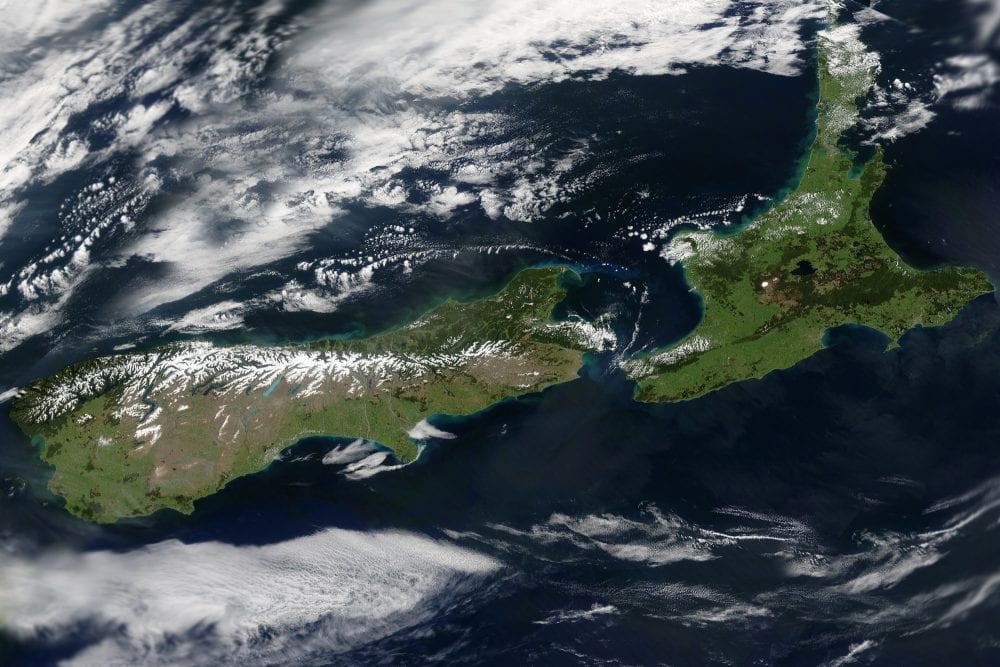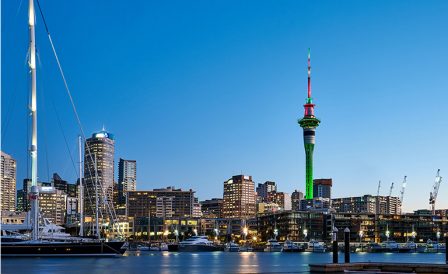Geography
New Zealand is located in the southwestern Pacific Ocean. At a distance of more than 4000 kilometers away from Australia, separated by Tasman Sea. The territory of the country consists of two main islands of the North and South separated by the Cook Strait, as well as about 700 islands of much smaller area, most of which are uninhabited.
The total area of the country is almost 270,000 square kilometers. It is slightly larger than the UK, almost the same as the Philippines, but smaller than Japan or Germany. You can fly by plane from the largest city of Northern Auckland to the most popular city of South Queenstown in two hours. At the same time, no matter where you are, the nearest coast will be no more than 3 hours away by car. In fact, you can even snowboard in the mountains and surf the sea on the same day.


Climate
The climate is from subtropical to temperate. In the North is warmer than in the South. At the same time, the seasons are the opposite of those in the Northern Hemisphere. The coldest month is July, the hottest is February. A large amount of sunshine you can find on both islands and moderate rain is evenly distributed throughout the year, with the exception of drier summers.
North Island
On the hilly and green North Island, the temperature has no strong difference. The average temperature in the region is + 15-16 degrees Celsius. In the largest city of Northern Auckland, the temperature in winter rarely drops to 0 degrees and in summer it rarely exceeds +30 degrees. The east coast of the island is even sunnier and drier than the west. Wellington, the capital of New Zealand, located on the southern part of the North Island. The average annual temperature of about +13 degrees and more windy, but the temperature here in the summer can be even slightly higher than in Auckland.


South Island
South Island is divided in half by the Southern Alps. This blocks the westerly winds and divides the island into two different climatic zones. The west coast of the South Island is the wettest part of the country; the eastern part is the driest. In the northern part of the island in the cities of Picton and Nelson, the weather is dominated by a sunny climate with an average minimum of +3 degrees in winter and an average maximum of +23 degrees in summer (up to +36 degrees of absolute maximum). In the central and southern parts of the island temperatures can already drop below 0 in winter but above +30 in summer.


How to prepare for the trip and what things to take?
When preparing for a trip to New Zealand, you need to understand in which region you will visit and what time of the year your trip is. In addition to summer clothes, you also should take warm clothes. Most New Zealand houses are still pretty cool, as they were built according to old British traditions.
For the outdoor, we recommend taking a sweater and a waterproof, windproof jacket. And if you are planning a trip to South Island in winter you can safely take warm winter clothes. Most of the time, the weather in New Zealand is sunny and pleasant with average comfortable temperatures.
All seasons in New Zealand are beautiful in their own way in all regions of the country. But the sun is very active. So don’t forget to use sunscreens and avoid being in an open space for a long time.
Read more about New Zealand in this section
Subscribe to our Facebook page to stay updated



